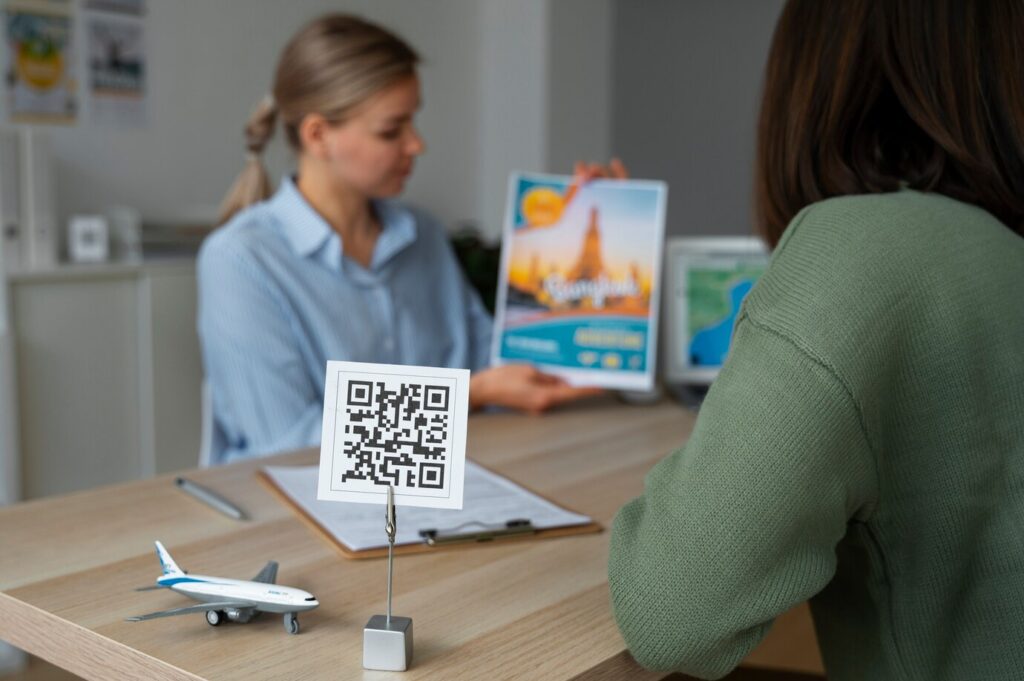
Create QR Code for Business – How QR Codes Are Transforming Australian Industries
In a digital-first world where speed, convenience, and contactless interactions matter more than ever, QR codes have evolved from simple marketing tools to powerful business assets. From contactless menus and digital payments to product tracking and data sharing, businesses across Australia are leveraging QR code technology to enhance customer experiences, streamline operations, and gather valuable insights.
For businesses working in rugged environments—construction, logistics, mining, defense, and field services—QR codes offer even greater value. When paired with rugged devices like those supplied by Miltec, QR codes become the backbone of digital workflows in the toughest conditions.
This article explores the applications, benefits, best practices, and implementation strategies for using QR codes in business, with a special focus on rugged industry use cases. Learn how you can Create qr code for business effectively to transform your business operations.
What is a QR Code?
A QR (Quick Response) code is a two-dimensional barcode that stores information in a matrix of black squares. Unlike traditional barcodes, QR codes can store a wide range of data:
- Website URLs
- Text
- Contact information
- Payment links
- App downloads
- Geolocation
- Inventory data
A simple scan using a smartphone or rugged tablet can instantly retrieve and act upon this data, making QR codes a dynamic and versatile business tool.
Why QR Codes Matter for Australian Businesses
In recent years, the adoption of QR codes in Australia has surged, driven by:
- The COVID-19 pandemic and the need for contactless check-ins
- Growth in mobile payments and eCommerce
- A focus on digital transformation across industries
- Widespread use of smartphones and rugged mobile devices
QR codes are now common across retail, transport, construction, education, hospitality, healthcare, and industrial sectors. Businesses are using them not only for marketing, but also for operational efficiency, compliance, and real-time communication.
Applications of QR Codes Across Industries
Construction & Field Services
- Equipment Tracking: Attach QR codes to tools and machines for tracking usage, maintenance, and availability.
- Digital Blueprints: Store site plans in QR codes for quick access on rugged tablets.
- Safety Manuals: Link to safety documents or checklists for compliance.
Logistics & Supply Chain
- Shipment Verification: QR codes on packaging for scanning at checkpoints.
- Driver Instructions: Codes link to routing info, instructions, and POD forms.
- Inventory Scanning: Fast barcode-style data input using rugged scanners.
Healthcare & Aged Care
- Patient Files: Secure QR codes on wristbands to access records instantly.
- Medicine Tracking: Ensure proper drug use and storage.
- Cleaning Schedules: Track sanitization of rooms and equipment.
Hospitality & Retail
- Menus & Ordering: QR code-based menus reduce contact and printing costs.
- Customer Feedback: Quick access to surveys, ratings, or review pages.
- Loyalty Programs: Easy redemption and tracking through QR codes.
Manufacturing & Mining
- Part Identification: Machine components tagged for real-time tracking.
- Maintenance Logs: Link to service history and repair records.
- Compliance Audits: Ensure all tools are accounted for and serviced.
How to Create a QR Code for Your Business
Creating a QR code is simple, but creating one effectively and securely for business use takes strategy. Here’s how:
Choose the Right QR Code Generator
Use reputable platforms like:
- QRCode Monkey
- QRStuff (Australia-based)
- GoQR.me
- Beaconstac (Enterprise use)
- Custom solutions from Miltec’s tech consultants
Determine the Type of QR Code
Common types include:
- URL (for websites or landing pages)
- PDF (manuals, brochures, reports)
- vCard (contact info)
- SMS or Email (pre-filled messages)
- Location (Google Maps)
- App download links
Design for Branding
Custom QR codes can feature:
- Your company logo
- Custom colors
- Frame or CTA text like “Scan for Menu” or “Track Here”
Test for Compatibility
Ensure your QR codes:
- Are readable across multiple devices
- Function in low light or glare
- Work on both Android and iOS
Print or Deploy Securely
- Use durable stickers or laminated cards in rugged environments
- Embed codes into screens or kiosks
- Use tamper-proof labels for compliance-sensitive areas
Best Practices for Using QR Codes in Rugged Environments
Use High-Contrast Codes
For quick scanning in the field, especially under glare or dirt.
Laminate or Print on Durable Materials
Ensure codes survive weather, chemicals, or abrasion.
Use Rugged Devices for Scanning
Equip teams with rugged tablets or handhelds from Miltec for reliable scans in any conditions.
Secure the Destination
Ensure URLs or data behind the QR code are secure, especially for sensitive business operations.
Monitor Usage
Use dynamic QR codes (trackable and editable) to gain analytics on scan location, time, and device type.
QR Code Integration with Rugged Devices from Miltec
Miltec supplies rugged Android and Windows tablets that are ideal for QR scanning, even in extreme conditions:
- Toughbook G2, A3, or FZ-N1 with in-built barcode readers
- High-resolution cameras with fast autofocus
- Easy integration with asset management and inventory apps
- Long battery life for all-day scanning
- Drop-tested and IP-rated to withstand water and dust
Use Case: Mining Logistics
Miltec deployed Toughbook FZ-N1 rugged handhelds with built-in QR scanning for an Australian mining firm. QR codes on equipment and containers allowed:
- Accurate location logging
- Instant equipment ID lookup
- Seamless syncing with ERP systems Result: 35% reduction in asset losses and 25% faster inventory audits.
Static vs Dynamic QR Codes: Which is Better for Business?
| Feature | Static QR Code | Dynamic QR Code |
|---|---|---|
| Editable | No | Yes |
| Trackable | No | Yes (location, time, device type) |
| Cost | Free (often) | Usually requires subscription |
| Use Cases | Simple links or one-time use | Marketing, data collection, smart systems |
Miltec recommends dynamic QR codes for long-term business use—allowing you to change the destination without printing new labels, and track usage in real time.
QR Code Use in Australian Government and Public Services
Australia has embraced QR codes for:
- COVID-safe check-ins
- Public transport ticketing
- Tourism and event access
- Emergency information
Businesses using QR codes benefit from user familiarity and trust—especially when integrated with smartphones or rugged field devices.
QR Code Safety and Data Protection
Although QR codes themselves are harmless, the links behind them can be exploited. To ensure business continuity and protect data:
- Use HTTPS links only
- Avoid linking to editable documents
- Never use public QR generators for sensitive business data
- Use password protection or tokenized links for private resources
Miltec also advises implementing mobile device management (MDM) for rugged tablets used in QR workflows to prevent unauthorized app usage.
Future of QR Codes in Business: What’s Coming?
📡NFC + QR Hybrid Tags
Combine QR codes with NFC for dual-mode scanning and tap access.
Smart QR Codes with AI
Codes that dynamically change content based on the user’s behavior or location.
QR Codes for AR
Launch augmented reality product guides or training modules using QR links.
Blockchain-Powered QR
For tamper-proof tracking in logistics and pharmaceuticals.
Conclusion
QR codes are far more than just marketing gimmicks—they’re an integral part of modern digital workflows, offering cost-effective, fast, and secure access to business-critical data.
